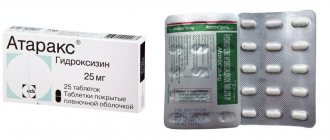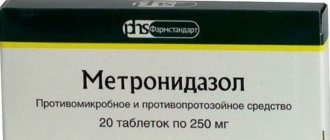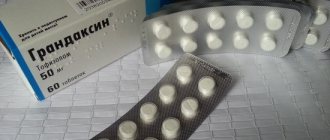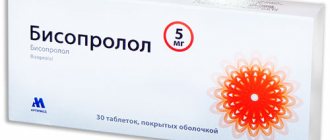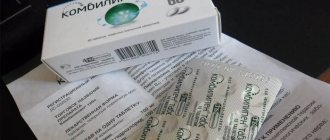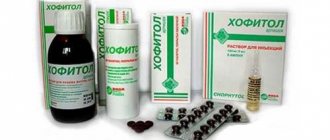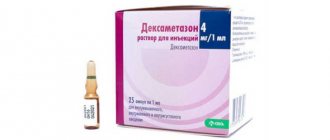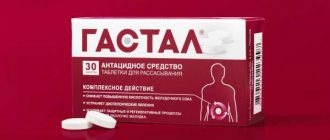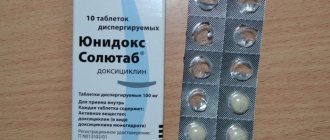Analogs
Proton pump inhibitor drugs can serve as a substitute for each other. Therefore, analogues of Nolpaza are:
- Control;
- Peptazol;
- Zipanthol;
- Pantaz;
- Sanpraz;
- Panum;
- Ulthera.
These medications are suitable both for replacement already during treatment and for use as a priority. Each medicine contains pantoprazole as the main active substance, but its dosage is different. Therefore, it may be necessary to adjust the amount of the drug in accordance with the numerical values of pantoprazole content.
Also suitable as an alternative are drugs with a similar mechanism of action, but containing a different active compound. Therefore, for the treatment of diseases associated with increased acidity of gastric juice, they are also used (international nonproprietary names are given, trade names may differ):
- Omeprazole;
- Pantoprazole;
- Lansoprazole;
- Rabeprazole;
- Esomeprazole.
pharmachologic effect
Nolpaza is a hypoacid drug from the group of proton pump inhibitors. The drug contains an active component - pantoprazole - a benzimidazole derivative that has the ability to inhibit the activity of H+/K+ ATPase.
In an acidic environment, the active component of the drug is converted into a pharmacologically active form and blocks the final stage of hydrophilic secretion of HCl in the stomach. The drug equally effectively inhibits basal and stimulated production of hydrochloric acid.
When using the drug, there is an increase in gastrin secretion, which is reversible.
Nolpaza for gastritis
A remedy is prescribed for gastritis when this disease occurs against a background of excessive acidity. The drug corrects the synthesis of hydrochloric acid, eliminating the pronounced symptoms of this pathology. Nolpaza is quite well absorbed and easily tolerated by the body; it can demonstrate a long-lasting therapeutic effect, but only if the medicine is taken correctly
This medicine has contraindications and side effects, therefore, before taking the medicine, it is important to consult a gastroenterologist
How long to take Nolpaza?
The duration of treatment for gastritis and stomach ulcers is from 4 to 8 weeks. In order to prevent such conditions, Nolpaza is prescribed for use in an amount of 20 mg per day. Treatment of peptic ulcer. When eradicating Helicobacter pylori bacteria, the course of using Nolpaza is at least 7 days. For Zollinger-Ellison syndrome, the duration of therapy is individual.
Indications for use
As the instructions for use indicate, Nolpaza is indicated for use for the treatment of the diseases listed below.
- Treatment of gastroesophageal reflux disease (GERD) in various forms, including erosive ulcerative esophagitis.
- Relief of symptoms caused by GERD, for example, elimination of heartburn, pain when swallowing, sour belching, and so on. Not everyone knows why Nolpaza is prescribed.
- Treatment of erosions and ulcers of the gastric and intestinal mucosa, which is caused by taking Aspirin, Indomethacin, Ibuprofen, Nimesulide, Naise, Ketanova, Ketorol, and the like.
- Treatment and prevention of exacerbations of stomach or intestinal ulcers.
- Use in combination with two antibiotics for the eradication of Helicobacter bacteria.
- Treatment of Ellison syndrome.
There are a lot of reviews about Nolpaz.
Comparison of some similar drugs
Despite the same indications, drugs have different effects on the human body. This also takes into account individual reactions that may affect their tolerability. Most often, patients are faced with a choice between Nolpaza and the popular drugs omeprazole. Features if the doctor has not indicated a specific drug (this occurs in mild stages of the disease).
Nolpaza or Ultop
Ultop goes on sale in capsule form (oral form). Unlike Nolpaza, dosage adjustment is not required in the elderly and with impaired renal function. Also, if it is difficult to swallow the capsule whole, it is permissible to open it and mix the contents with a non-alkaline liquid.
Omez or Nolpaza
Nolpaza has greater bioavailability compared to Omez. But the speed of action of the latter is much higher (the effect occurs within 40-50 minutes). At the same time, its more aggressive action and a higher frequency of adverse events are noted.
Omeprazole or Nolpaza
Omeprazole has a stronger and longer lasting effect. But patients note better tolerability of Nolpaza. They also consider the large number of manufacturers of Omeprazole to be a disadvantage, which causes inconvenience when searching for a specific company. In addition, due to the difference in the composition of auxiliary ingredients, differences in their effectiveness may be observed due to individual reactions of the body.
Nolpaza compares favorably with its analogues by the possibility of use during remission, as maintenance therapy. At the same time, the frequency of adverse reactions does not increase.
What is Nolpaza?
Nolpaza is a drug that reduces the secretion of gastric glands. According to the international system of anatomical-therapeutic-chemical classification, the drug is assigned code A02BC, representing proton pump inhibitors. The product is used for restorative therapy of conditions of the digestive tract organs suffering from excess hydrochloric acid.
Before starting treatment, you should understand what Nolpaza is and why it is prescribed. The drug has a suppressive effect on the production of hydrochloric acid by gastric cells, resulting in a decrease in the acidity of the secretion. The effect is achieved by completely or partially inhibiting the action of the so-called proton pump, an enzyme protein that promotes the release of acid in the stomach.
The functioning of the proton pump in the body is one of the most important conditions for the digestion of food. Failures in the normal operation of the system lead to activation of the process, accompanied by painful and uncomfortable sensations. Nolpaza neutralizes the aggressive effect of an acidic environment on internal organs. Defects existing on the mucous membrane begin to heal and scar. Nolpaza helps to increase the formation of gastrin, a hormone that plays an important role in the digestive process.
Mechanism of action of Nolpaza
When the tablet enters the gastrointestinal tract, it gradually dissolves. In the cavity of the small intestine, the components of the drug are absorbed and enter the liver with the blood, and then penetrate the gastric mucosa. The accumulation of the active substance occurs in the secretory tubules of parietal cells. The enzyme inhibitor is activated, during which the process of producing hydrochloric acid is blocked. Regardless of the origin of the source of irritation, the level of secretion begins to fall. The drug is activated in the first hour of administration, the maximum effect occurs after 2-2.5 hours. To resume the process, 1.5-2 days must pass after the last pill. Nolpaza does not affect the motility of the digestive tract.
In what form can the medicine be purchased?
The drug is available in the form of tablets and lyophilisate.
Tablets with a soluble outer coating have an oblong, biconvex configuration. The shell is rough, yellow or brown, the internal contents are white or with a yellowish tint. The active ingredient is pantoprazole. Dosages: 20 mg and 40 mg pantoprazole. Sold in blisters of 14, 28, 56 pcs.
Lyophilisate is a dried preparation for creating a solution for injection. A white or yellowish powdery substance. The dose of the active substance is 40 mg. Available in sealed ampoules of 1, 5, 10, 20 pieces per package.
Nolpaza stomach tablets are preferable for treatment. When taken orally, pantoprazole is completely absorbed. The active substance is absorbed by 77%. The solution is injected into a vein if it is impossible to take tablets. The injections should be administered by an experienced healthcare professional.
Instructions for use
Before starting to use the drug, you must consult your doctor to clarify the diagnosis. Using Nolpaza without indications can lead to deterioration of health.
The tablets are for oral use only. The required amount of medication is taken before meals with a small amount of water.
The presence of food in the stomach (if the drug was drunk after a meal) does not affect the bioavailability of the active substance. Only the start time of Nolpaza’s action changes.
- When prescribing the drug once a day, it is recommended to take it in the morning (before breakfast).
- When taking twice a day, the tablets should be taken in the morning and evening.
The lyophilisate should only be used by medical personnel. It is administered intravenously, the rate of delivery of the drug solution is determined by the patient’s well-being. But the injection time should not exceed 15 minutes.
Typically, a lyophilisate is used when the patient is unable to take the oral form of the drug. To prepare it, physiological sodium chloride solution is used as a solvent in an amount of 10 ml per 1 bottle of the drug. The resulting solution is administered unchanged or dissolved in 100 ml of glucose solution (5%). It is prohibited to use other liquids to dissolve the lyophilisate.
The duration of use of the injection form of Nolpaza should not exceed 7 days.
Rules for taking Nolpaza in the treatment of gastritis
Nolpaza helps cure gastritis. It is not recommended to start taking the medicine on your own. You should contact a gastroenterologist, carry out procedures to study the gastric mucosa, and only then begin treatment according to the diagnosis.
When taking pills for a short course to relieve symptoms and pain, you can get a temporary effect from the medicine and later develop a relapse or complication. To ensure a long-term healthy stomach, you need to follow a number of rules. For a complete recovery, you must complete the full course prescribed by the doctor. A long period of use ensures high-quality and reliable results.
You must take the pills strictly as prescribed by your doctor, daily and regularly. The daily dose should be 20 mg of pantoprazole (one tablet) so that the body does not react to the medication with side effects and worsening of the condition.
You must take the pills strictly as prescribed by your doctor daily and regularly.
Nolpaza is available in the form of tablets and injection solutions. Depending on the prescription, the patient must take pills or give injections. For injections, a daily dose of pantoprazole is allowed in the amount of 40 mg. If you need to administer an antibiotic along with an injection, the doctor will select it individually for each patient. Treatment of gastritis should take place within a month. Next, a break is taken for a week or two so that there is no addiction to the drug. You should not take medications during the rest period.
Self-medication can aggravate the general condition and lead to undesirable consequences. For the greatest effect, you should carefully study the instructions on the interaction of the medication with other medications. If there is pain in the stomach area, taking anti-inflammatory non-steroidal medications as pain relief is strictly prohibited! The drugs cause the development of ulcers with complications.
Side effects
Adverse drug reactions are characterized by a wide variety of disruptions in the functioning of organs and systems. But the most common symptoms are headache and impaired bowel movement (diarrhea). Other effects occur rarely and are expressed in:
- changes in blood composition, mainly a decrease in the amount of certain formed elements - leukopenia, thrombocytopenia, etc.;
- violation of the psychological state - insomnia, depression, disorientation in space;
- nervous system disorder - headache with different localization, dizziness;
- double or blurred vision;
- disturbances in the digestive tract - gas formation, nausea, abdominal pain;
- skin allergic reactions;
- pain in muscles and joints;
- increased bone fragility;
- general anaphylactic reactions of varying severity;
- disruption of the hepatobiliary system (jaundice, changes in the activity of liver enzymes).
For lyophilisate, in addition to the listed undesirable effects, reactions at the injection site are possible:
- thrombophlebitis;
- formation of infiltrate;
- swelling.
There may also be general malaise, expressed in weakness and severe fatigue.
Rules of application
Two types of nolpaza are made: containing 20 and 40 mg of sodium pantoprazole and excipients. Auxiliary components include anhydrous sodium carbonate, mannitol, calcium stearate, sorbitol, crospovidone.
- The regimen and dosage of pantoprazole is determined depending on the type, duration and severity of the disease. In different cases, the doses are different.
- The medication is taken orally. Without breaking or biting, swallow the tablet before breakfast and wash it down with plain water at room temperature. It is not recommended to drink it with juices, compotes, tea, and other drinks. When your doctor prescribes a double dose of medication, you should take the pill the second time before dinner.
- For the prevention of ulcers and for long-term maintenance therapy, Nolpaza should be taken 20 mg per day. If you need to increase the dosage, prescribe 40 or 80 mg per day.
- For diseases of the stomach and duodenum of an ulcerative nature and for prevention, 1 - 2 tablets are prescribed per day (containing an active substance of 40 mg). Treatment of exacerbation continues for two weeks for duodenal ulcers and 4–8 weeks for gastric ulcers. If necessary, the therapeutic course can be extended only by a specialist doctor.
- To destroy Helicobacter pylori bacteria, the medicine is prescribed together with antibiotics (two antibiotics plus Nolpase). According to doctors' recommendations, you should take pantoprazole 40 mg twice a day. Anti-Heliobacter course of therapy should last one to two weeks.
Erosive-ulcerative reflux esophagitis and gastroesophageal reflux disease are treated depending on the severity. If the disease is mild, with minor pain symptoms, one tablet per day (20 mg) is prescribed.
In cases of moderate and severe disease, the dose should be increased and amount to one or two tablets of 40 mg. After two to four weeks, the patient may feel symptomatic relief, and after a couple of months the patient’s complete recovery occurs.
In case of damage to the stomach and duodenum by erosive-ulcerative inflammation, which is caused by taking non-steroidal drugs, therapy continues for one to two months with a dose of pantoprazole 40 - 80 mg per day. Typically, a decrease and relief of pain is observed after a couple of weeks.
Prevention of erosions and ulcers when taking NSAIDs for a long period should be carried out with a dosage of Nolpaza 20 milligrams per day.
Pathological conditions with increased secretion of gastric juice and Zollinger-Ellison syndrome require increased intake of the drug. In order to control gastric secretion, the daily dosage of pantoprazole can be 160 mg (up to 4/8 tablets of 20/40 mg). But this is only temporary.
Long-term therapy should be carried out with double doses of 40 mg tablets. The patient should drink 80 mg of the active substance per day. When taking the drug for a long time, depending on the level of gastric juice, the dosage can be changed. Course therapy is determined strictly individually for each patient.
Contraindications
The drug is not used by people under the age of 18, since laboratory studies have not been conducted to study the effects of Nolpaza on this group of patients.
In addition, the drug is not intended for treatment of the following conditions:
- pregnancy;
- lactation;
- HIV treatment (with the drug Atazanavir, etc.);
- high sensitivity to components included in any form;
- disturbance of fructose metabolism (genetic disease) due to the content of sorbitol in tablet dosage form;
- dyspepsia of neurological origin.
Nolpaza can also have a negative effect if:
- renal and liver failure;
- old age;
- predisposition to vitamin B12 deficiency.
These conditions require caution when calculating the required dosage
Pharmacological action
The main active ingredient of Nolpaza is pantoprazole. It has a blocking effect on the production of hydrochloric acid in the final stage, reducing its secretion. The maximum effect of the drug is observed two to three hours after administration.
When digesting food in the stomach, Nolpaza does not affect the process itself or the motility of the stomach. With 100% metabolism in the liver and rapid absorption through the mucous wall of the gastrointestinal tract, pantoprazole is excreted from the body by 3/4 in the urine and 1/4 in the bile.
If the drug is stopped, the activity of the secretory function responsible for the synthesis of hydrochloric acid will be completely restored on the fourth day.
Composition and release form
Nolpaza is commercially available in tablets and lyophilisate for preparing a solution (administered intravenously).
The active ingredient of the drug is pantoprazole sodium sesquihydrate. Its concentration has different values in each release form.
| Release form | Concentration of the active substance in terms of pantoprazole |
| Tablets 20 | 20 mg |
| Tablets 40 | 40 mg |
| Lyophilisate | 40 mg |
The list of additional substances that form the tablet form of both dosages includes:
- crospovidone;
- sodium and calcium salts;
- sorbitol.
They are also covered with a shell that dissolves only when it enters the intestines. It protects the contents of the tablet from the acidic environment of the stomach.
The lyophilisate has fewer additional chemical compounds:
- mannitol;
- sodium citrate dihydrate;
- sodium hydroxide solution 1N.
Nolpaza description of the drug
This drug is produced in the form of tablets and lyophilisate used to prepare a solution for intravenous administration.
Nolpaza is a good option for gastritis because it is time-tested and has fewer contraindications
The latter is a light powder. It can be slightly compressed: this does not impair the therapeutic properties of this drug. Before administration, the lyophilisate is diluted with 5% glucose or saline. Nolpaza tablets are light yellow, oval in shape. They are available in 14, 28 and 56 pills per package.
The main active ingredient in this drug is pantoprazole. Since the tablets are available in two types, some contain 20 mg of this component, and others contain 40 mg. The drip solution contains 40 mg of pantoprazole.
This medication is in great demand among gastroenterologists. It is prescribed for pathologies accompanied by excessive production of hydrochloric acid, and for the healing of ulcers that appear due to the aggressive action of gastric juice.
The effect of taking this drug does not take long to appear. In fact, the medicine acts very quickly. After half an hour or an hour, Nolpaza provides relief. However, the maximum effect is observed only after 2-2.5 hours after taking the medication. After discontinuation of this drug, normalization of hydrochloric acid production will occur only after 3-4 days.
The effect of taking this medicine does not take long to appear; in fact, the medicine acts very quickly
When is Nolpaza used for gastritis?
This medicine is usually prescribed because it belongs to a group of proton pump inhibitors, drugs that block the release of hydrochloric acid inside the stomach. Its excessive secretion leads to hyperacid and alimentary gastritis, reflux esophagitis, and gastric ulcers.
The course of taking the drug consists of two weeks. The effect of the tablets occurs immediately, but it takes time to consolidate it.
There are several general recommendations that should be adopted by everyone who is prescribed Nolpaza for gastritis:
- the drug is taken once a day, 20 mg before meals;
- The maximum duration of the course of treatment is no more than a month. Then it is necessary to suspend treatment of gastritis; Nolpaza can be taken again only after a month's break;
- For pregnant women and breastfeeding women, the drug is contraindicated;
- Tablets should not be taken by persons under 18 years of age;
- The dosage is described in detail in the instructions; you should not deviate from it or take the initiative.
Since Nolpaza reduces the acidity of the stomach during gastritis, the absorption of other drugs will be difficult. This means that they may not act as effectively as the attending physician expects. If the presence of the Helicobacter pylori bacterium is detected, the drug can be taken. But only at a dose of 40 mg and paired with a strong antibiotic.
Why is Nolpaza prescribed?
Nolpaza is prescribed to reduce the acidity level of the stomach contents (in particular, gastric juice). This helps stop the constant irritating effect on the mucous membrane lining the inner surface of the stomach. As a result, the processes of regeneration and scarring of existing damage are activated.
Therefore, the list of indications for use includes:
- ulcerative lesions of the stomach and duodenum during exacerbation;
- erosive gastritis;
- gastroesophageal reflux disease (GERD);
- Zollinger-Ellison syndrome (pancreatic adenoma, which by stimulating the production of gastrin increases the acidity of gastric juice);
- in complex therapy aimed at getting rid of Helicobacter pylori;
- erosive and ulcerative reflux esophagitis;
- elimination of symptoms caused by increased production of HCl - heartburn, sour belching, pain when swallowing and passing food through the esophagus;
- Stress-induced ulcers and their complications.
Nolpaza can also act as a prophylactic for conditions that increase the risk of exacerbation of these stomach diseases.
Action of Nolpaza
Nolpaza is essentially used to treat ulcers in the stomach and duodenum. Nolpaza also helps well with gastritis, when it is necessary to reduce the release of hydrochloric acid into the stomach. Nolpaza stops the proton pump, which prevents the excessive production of hydrochloric acid. Due to this reduction in the secretion of hydrochloric acid, the acidity of gastric juice decreases.
Declining acidity allows ulcers on the mucous membrane to heal and unpleasant symptoms disappear.
Nolpaza enhances the effect of antibacterial agents. If the cause of the disease is Helicobacter pylori bacteria, then antibiotic therapy in combination with Nolpaza will enhance the effectiveness of taking antimicrobial drugs. This will help cure gastritis caused by Helicobacter pylori, in contrast to taking only antibiotics, without Nolpaza.
When the acidity of gastric juice decreases, hydrochloric acid stops damaging the walls of the esophagus, which will help in the treatment of gastroesophageal reflux and gastroesophageal reflux disease.
After taking Nolpaza, the effect is achieved in 40-60 minutes, the maximum concentration is achieved in 2.5 - 3 hours. As soon as the use of the drug ends, the function of hydrochloric acid production is restored within 4 days. Nolpaza is prescribed for a period of 2 weeks to 2 months. The period is set by the doctor based on the severity of the disease. Within two weeks of regular use, Nolpaza will eliminate the symptoms of heartburn, belching, and nausea.
While taking Nolpaza, the level of gastrin increases, but after stopping the medication, its level returns to normal.
Nolpaza has no effect on the frequency of bowel movements, motor skills and peristalsis.
Drug interactions
Nolpaza reduces the absorption of drugs whose bioavailability depends on the pH of the stomach and those absorbed at acidic pH values (for example, ketoconazole).
Pantoprazole is metabolized in the liver via the cytochrome P450 enzyme system. Interactions between pantoprazole and drugs that are metabolized by the same system cannot be excluded. However, in clinical studies, no significant interactions were identified with digoxin, diazepam, diclofenac, ethanol, phenytoin, glibenclamide, carbamazepine, caffeine, metoprolol, naproxen, nifedipine, piroxicam, theophylline and oral contraceptives.
Although no significant interactions were identified during concomitant use with warfarin in clinical pharmacokinetic studies, there were a few isolated reports of changes in MHO. In patients receiving coumarin anticoagulants concomitantly with pantoprazole, regular monitoring of prothrombin time or MHO is recommended.
No drug interactions have been reported when pantoprazole is taken concomitantly with antacids.
What is pancreatitis
Pancreatitis is an inflammation of the pancreas, in which the enzymes it secretes are activated in the gland itself, beginning to destroy it, instead of entering the duodenum. The toxins released during this process can enter the bloodstream and harm other organs (lungs, brain, kidneys, liver, heart). There are two types of pancreatitis: chronic and acute.
Acute pancreatitis is a serious disease in which the gland cells digest themselves and die due to enzymes that return back along with pancreatic juice. In 15 cases out of 100, death may occur, despite modern methods of research and treatment of the disease. With destructive forms, more than half of the patients die.
The development of the disease can be obtained in the presence of cholelithiasis in women, after drinking alcohol in young and mature men, and during operations on the abdominal organs. In rare cases, the disease is observed with injuries, allergies, and duodenal ulcers.
Also, an acute attack can occur after poisoning with medications, paints and varnishes, or salts of heavy metals. Women and men over the age of thirty suffer more than others from the acute form of pancreatitis.
Other remedies for stomach ulcers
PPIs are not prescribed separately, but in treatment regimens for various acid-related gastrointestinal diseases. To eradicate Helicobacter pylori with a stomach ulcer, an antibiotic and a drug that protects the mucous membrane - a gastroprotector (De Nol) - are taken simultaneously. PPI drugs (Controloc, Omez, Pariet and their analogs) are not an antibiotic, as some people think. These medications do not get rid of the bacteria. De Nol is also not an antibiotic, but has an antiseptic effect against Helicobacter, since it is made on the basis of bismuth. De Nol must be taken simultaneously with a drug that reduces acidity, and the antibiotic destroys the cause of the disease - the bacteria.
The drug De Nol is also prescribed in cases where Helicobacter is not present in the tests. Thus, De Nol can be taken together with a product containing omeprazole (Omez, Ultop), pantoprazole (Controloc, Sanpraz, Nolpaza), rabeprazole (Pariet, Noflux) or other PPIs (lansoprazole). The principle of action of the drug De Nol is that it creates a protective film precisely in the areas of erosion or ulcers, allowing the mucous membrane to recover, reducing the likelihood of ulcer recurrence. PPIs and De Nol can be prescribed simultaneously even if the patient has been treated with non-steroidal anti-inflammatory drugs for a long time. De Nol is taken once a day and is usually well tolerated, but it must be taken separately from other medications.
The average cost of this product is 600 rubles for 56 tablets. A cheaper domestic analogue of the drug De Nol is Novobismol (350 rubles).
So, to summarize, it can be noted that all PPIs (omeprazole, pantoprazole, rabeprazole, etc.) are new generation drugs that effectively treat high acidity in ulcers and other gastrointestinal diseases. The prescription of a particular drug depends on the state of health, concomitant diseases, individual tolerance and other factors. Along with PPIs, it is necessary to take other medications - De Nol, antibiotics, prokinetics, and so on. This is important for complex treatment of the disease.
Life in modern society is accompanied by constant stress and unhealthy eating habits. Body functions are disrupted and organs begin to malfunction. Many diseases are associated with disruption of digestive processes, inflammation in the gastrointestinal tract, leading to severe painful consequences and chronic diseases.
You should consult a doctor in time to receive quality advice and prescribe a therapeutic course of treatment. The doctor will prescribe medications, for example, Nolpaza or Pariet, which will help cope with the problem and cure inflammation and ulcers.
Carrying out work with high-precision mechanisms
The drug Nolpaza, in tablet form and in the form of lyophilized powder for the preparation of an injection solution, is prohibited for use during pregnancy and breastfeeding. Such precautions are necessary due to insufficient information about the possible negative effects of the drug.
If it is absolutely necessary to use the drug during lactation, breastfeeding should be interrupted for the period of therapy.
During the therapeutic course, dizziness may develop, as well as visual impairment. Therefore, it is recommended to refrain from carrying out high-precision work that requires increased attention, as well as from driving vehicles and a personal car.
Which is better Omez or Nolpaza?
The use of any drug is very individual and directly depends on the physiological characteristics of the body. Therefore, it is incorrect to pose the question this way. What may be a good indicator for one patient may have a negative effect on another.
If you need to achieve a quick impact on the pathological process, it is best to use Omez. To achieve a prolonged effect, it is better to use Nolpaza. Its use can be combined with drugs from various pharmacological groups.
According to sociological surveys, the majority of patients give preference to Omez , this is due not only to its low price, but also to the speed of the drug.
Pharmacokinetics
"Nolpaza" has the following characteristics.
1) In terms of suction.
The active substance pantoprazole is rapidly absorbed from the gastrointestinal tract, reaching a maximum concentration approximately two or two and a half hours after consumption and has indicators of 1.0-1.5 micrograms per milliliter, while the value of the highest concentration will be constant even with repeated use. The bioavailability of the drug is seventy-seven percent. Concomitant use with food does not have any effect on bioavailability, AUC and maximum concentration. There is only a change in the time when the drug begins to act. This is confirmed by the instructions for use for Nolpaza. According to reviews, analogues work no worse.
2) In terms of distribution.
The drug binds to plasma proteins by ninety-eight percent.
3) From a metabolic point of view.
The active substance pantoprazole is almost completely metabolized in the liver. It is an inhibitor of the CYP2C19 isoenzyme.
4) Removal.
The half-life is one hour. Due to the specific binding nature of the parietal cell proton pump and pantoprazole, the half-life does not correlate with the duration of the therapeutic effect. Metabolites are excreted primarily through the kidneys (eighty percent), the rest - along with bile. The main metabolite, which is determined in urine and blood serum, is desmethylpantoprazole. It is conjugated with sulfate. The half-life of desmethylpantoprazole is about one and a half hours, that is, longer than that of pantoprazole. Russian analogues for Nolpaza should be selected by a doctor.
Other PP inhibitors
Omeprazole
Other proton pump blockers are also used simultaneously with pantoprazole. the most popular is omeprazole (original: Losek). Drugs containing omeprazole are produced by pharmaceutical factories around the world. You can find both Russian and imported analogues. Omeprazole is contained in medications with names such as Omez (India), Losek (Sweden), Demeprazole (Turkey), Gastrozol (Russia), Ultop (Slovenia) and others. Naturally, these funds differ significantly in cost. The price varies from 25 rubles for Russian omeprazole 20 mg to 1500 for Swedish 40 mg. Omez costs about 300 rubles on average. Slovenian Ultop – 150 for 14 tablets of 40 mg.
Esomeprazole
Another popular PPI is esomeprazole. Contained, in particular, in the drug Emanera. Emanera is also produced in Slovenia by KRKA. This drug is better than Nolpaza or Controloc in that additional tests have been carried out on it, and it is prescribed to children from 12 years of age in case of gastroreflux disease. However, Emanera is more expensive than Nolpaza, approximately 300 rubles for 14 capsules of 40 mg.
If we compare the cost of Emanera and Omez products, they are almost the same.
Sometimes doctors prescribe not Emanera, but Nexium. This is a drug with the same active ingredient, but is produced at pharmaceutical plants in Sweden or the UK. Nexium is noticeably more expensive - 1800 rubles for 14 tablets of 20 or 40 mg. Nexium is the first drug containing esomeprazole. Previously, while it was protected by a patent, patients had no choice; they had to buy an expensive medicine.
Now that its analogues have filled pharmacies, buyers have a choice. What is better, Nexium or, for example, Emanera, Neo-Zext, containing the same esomeprazole, is a controversial issue. Considering that the course of treatment lasts up to 8 weeks, and several medications must be taken at the same time, Nexium can ruin the patient.
Rabeprazole
Another substance, a more recent development, is rabeprazole. Contained in such drugs as Pariet, Noflux. It is worth noting that the Belgian Pariet is an expensive drug; a package of 20 or 40 mg tablets costs more than 3 thousand rubles. But it also has an analogue - the Slovenian drug Zulbex (650 rubles).
Comparison
Pantoprazole preparations (Nolpaza, Controloc) have less antisecretory activity than those containing Omeprazole (Omez, Ultop, Sanpraz), this affects the dosage of the drug.
If we talk about withdrawal syndrome, when after the end of treatment the acidity level sharply increases, then when taking PPIs there is usually no such syndrome, unlike histamine blockers, which we will discuss below. At the same time, many doctors discontinue PPIs after a long course gradually, moving from a dose of 40 to 20 mg. When taking rabeprazole drugs (Pariet), the secretion of hydrochloric acid is restored slowly, so they do not have a “ricochet” effect.
Due to the characteristics of pharmacodynamics, drugs containing omeprazole are prescribed twice a day, while pantoprazole (Controloc, Nolpaza) and esomeprazole (Emanera, Nexium) are sufficient to be taken once.
The metabolism of rabeprazole (Pariet) does not depend on genetic variants of the liver enzyme that destroys such substances. Therefore, Pariet works more reliably and efficiently. Patients with liver diseases are prescribed Pariet and Nexium, and the dose is also adjusted - no more than 20 mg.
Drugs containing omeprazole (Omez, Losek, Gatrozol, Ultop) show more side effects than new developments. Pariet, according to medical literature, causes side effects in 2% of cases, and Omez, Ultop - in 15%. Nexium, Controloc is also considered a mildly active drug with a minimum of side effects.
Pariet acts faster, so it is prescribed for severe heartburn, severe pain and other symptoms of an ulcer. If there is no severe pain, Omez or Ultop, Sanpraz are prescribed.
If we compare omeprazole (Omez, Gastrozol, Ultop) and pantoprazole (Nolpaza, Controloc, Sanpraz), it should be noted that the first is strictly prohibited during pregnancy and breastfeeding, while the second is allowed to be taken.
Other drugs to reduce gastric acidity
In addition to PPIs, the secretion of hydrochloric acid is reduced by other substances - histamine H₂ receptor blockers. Kvamatel (130 rubles), Ranitidine (25 rubles). Today they are not the drugs of choice for the treatment of stomach ulcers, since they are not as effective as PPIs, have more side effects, and have to be taken more often to achieve an effect. In addition, withdrawal syndrome is typical for drugs such as Ranitidine.
But at the same time, it is worth noting that Ranitidine and its analogues (Famotidine, Quamatel) are often prescribed because allergies to PPI drugs, or, conversely, resistance to them, occur. Any drug is prescribed taking into account individual tolerance, which is why Ranitidine has not yet disappeared from pharmacies. PPIs and histamine blockers are not prescribed at the same time.
In addition to all of the listed remedies, antacid drugs reduce the acidity of gastric juice, but they are usually used as symptomatic treatment (for heartburn) and are not prescribed in a course.
When is the drug used?
- Nolpaza is prescribed by doctors for peptic ulcers of the stomach and duodenum, and for other pathologies of these organs;
- to relieve symptoms similar to gastroesophageal reflux disease;
- in combination with antibiotics to destroy Helicobacter pylori (bacteria).
In most cases, it treats diseases and inflammations of the stomach and related organs. To prevent a negative reaction from the stomach, gastroenterologists suggest using the medicine for acute and chronic pancreatitis in adults.
Action of Omeprazole
After taking Omeprazole orally, it begins to accumulate in the parietal cells of the gastric glands, which are responsible for the synthesis of hydrochloric acid. The active ingredient of the drug blocks further acid release. At the same time, under the influence of the medicine, gastric acidity is reduced, its aggressive effect on the injured walls of the organ ceases, after which they gain the ability to recover.
Omeprazole should not be taken by patients under 18 years of age, women during pregnancy and breastfeeding.
The drug is convenient for use due to its capsule form. Upon penetration into the stomach, the capsules dissolve under the influence of gastric juice. At the same time, their active substance is released, which begins to be absorbed by the mucous membrane. Immediately after this, the therapeutic effect of omeprazole begins - half an hour after taking the tablet and lasts about a day.
The drug in question has negative qualities. The reduced acid content in gastric juice, which is the result of using the drug, negatively affects the digestibility of food. This is important to consider, and you should visit a specialist before starting to take the medication. He will prescribe the right diet.
The product is used exclusively as prescribed by a doctor. It should not be taken by patients under 18 years of age, women during pregnancy and breastfeeding, as well as people who suffer from an allergic reaction to the drug and individual intolerance to its ingredients.
The difference between Nolpaza and Omez
There are a number of differences that are specific to only one drug:
- Manufacturer. Omez is produced by pharmaceutical firms in India, and Nolpaza is produced in Slovenia, so it is subject to higher European requirements.
- The main ingredient of Omez is Omeprazole, in the case of Nolpaza it is Pantoprazole.
- To achieve the same positive dynamics, Omez must be taken for a longer period than Nolpaza.
- Nolpaza has a wider spectrum of action.
- To achieve a therapeutic effect, it is enough to use Nolpaza once a day. The use of Omez is often done in the form of a double application.
- The average price for Omez does not exceed 100 rubles. for 10 pills, while for 14 tablet forms of Nolpaza you should pay 130 rubles.
Nolpaza or Omez: reviews from doctors and patients
Now we know the characteristic features of these drugs. But what do specialists and patients themselves think about them? The drugs Nolpaza and Omez, which are identical in effect, have different reviews.
Most doctors give their preference to Nolpaza, considering it a drug of a newer generation that has proven itself well. Another advantage in favor of Nolpaza, as experts note, is the production of the drug according to strict European standards, which significantly affects the quality of the medicine. Also, according to the observations of doctors, the use of pantoprazole is more easily tolerated by patients with a long course of treatment.
Nolpaza or Omez, which is better, reviews from patients differ from the opinions of professionals. Although they are basically subjective (it helped, it didn’t help), many people choose the “old”, proven Omez.
This is primarily due to its speed and instant results. In addition, many patients note its prolonged effects, sometimes up to 24 hours, and improvement in their condition already on the second or third day of use.
An important factor when choosing Omez for many is its price, since it is cheaper in comparison with the drug produced in Europe.
Regarding Nolpaza, reviews are much less common. Many patients also note a positive therapeutic effect from the use of this drug, without observing any side effects. But, unfortunately or not, Nolpaza is not as popular among ordinary people as Omez.
As we see, both drugs have the right to exist. And which one is better, everyone chooses for themselves individually.
Additional recommendations
Patients with pancreatitis must adhere to a therapeutic diet throughout their lives. In order for the pancreas to function properly, you should eat right. It is forbidden to eat fried, fatty, smoked, spicy, salty foods, spices, and dyes.
- Any alcohol is contraindicated for pancreatitis. It can also cause illness. In 50-70% of cases, exacerbation of the pancreas occurs from alcohol abuse.
- Meals should be frequent, in small portions, 4 - 5 times a day. It is better to eat cereals and pureed food. The diet must contain sufficient protein. Depending on the patient's condition, the food will vary, but the above rule should be followed.
- You should eat boiled and baked food - it is considered healthy.
- In case of illness, you can contact a nutritionist - he will help you choose an individual set of products for each patient.
- At the beginning of treatment of an acute form of the disease, the doctor may prescribe a three-day fast. This is a useful procedure and worth following. The pancreas will recover and decrease in size to its standard state.
- In this case, you should drink plenty of clean still water, warm unsweetened tea, and rosehip decoction to restore water balance in the body and help prevent pancreatic exacerbation.
- When treating pancreatitis, it is necessary to take calcium and vitamins of different groups: A, B, D, E, K.
- On your own, without a doctor’s prescription, you can only take antispasmodic drugs: papaverine, no-spa, paracetamol. All other medications must be prescribed by a doctor.
- How long can Duodart be taken?
NOLPAZA: SIDE EFFECTS
From the hematopoietic organs: very rarely - leukopenia, thrombocytopenia.
From the digestive system: often - abdominal pain, diarrhea, constipation, flatulence; infrequently - nausea, vomiting; rarely - dry mouth; very rarely - increased activity of liver transaminases and GGT, severe liver damage leading to jaundice with or without liver failure.
From the immune system: very rarely - anaphylactic reactions, including anaphylactic shock.
From the musculoskeletal system: rarely - arthralgia; very rarely - myalgia.
From the central nervous system and peripheral nervous system: often - headache; infrequently - dizziness, visual impairment (blurred vision); very rarely - depression.
From the genitourinary system: very rarely - interstitial nephritis.
Allergic reactions: infrequently - itching, rash; very rarely - urticaria, angioedema, Stevens-Johnson syndrome, erythema multiforme or Lyell's syndrome, photosensitivity.
Other: very rarely - peripheral edema, hyperthermia, weakness, painful tension of the mammary glands, increased triglyceride levels.
If severe adverse effects develop, treatment with the drug should be discontinued.
Control or Pariet
Pariet is an expensive analogue of Controloc based on rabeprazole. The drug is available in tablets in dosages of 10 and 20 mg and is classified as a proton pump inhibitor. The cost of the analogue is high - up to 10 times higher.
When choosing between Pariet or Controloc, the following features should be taken into account:
- the Pariet analogue is developed and manufactured in Japan or Switzerland, Controloc - in Germany;
- to achieve a therapeutic effect, the substitute is taken in a smaller dosage (10 or 20 mg), Controloc – 2 times more (20 or 40 mg);
- after the first use of Pariet, the manifestations of heartburn decrease;
- The analogue was studied for its effect on the body’s endocrine system and hormone levels, and as a result, it was found that there was no negative effect.
What to choose depends on the indications, financial capabilities, characteristics of the patient, and previous treatment.
The choice of a Controloc analogue depends on various factors. Which is better depends on the individual. It is important to contact a gastroenterologist in a timely manner, conduct an examination and undergo full treatment.
What can replace the medicine?
Doctors recommend Nolpaza to patients, explaining the choice by the high effectiveness of the drug, strict standards in the production process, good tolerability with long-term use, and less frequent side effects. Since the cost of the drug is relatively high, many prefer Nolpaze to its analogues. Pharmacies offer a fairly wide selection of foreign and domestic proton pump inhibitors. The main difference between them is the active substance.
We advise you to find out what symptoms indicate the development of enteritis in children.
Russian-made drugs:
Domestic analogues are not inferior to Nolpaza in terms of efficiency and cost significantly less.
Before you independently try to eliminate such unpleasant phenomena as heartburn with the help of medications, you should consult a doctor and find out the causes of the ailment. A specialist will help you decide on the optimal drug.
Understanding what Nolpaza is and why it is prescribed is very important, since this drug is quite popular among gastroenterologists. It has a wide range of indications. However, this drug also has contraindications for use.
What is better to take - Nolpaza or Omeprazole?
It is difficult to answer this question unequivocally due to the similar effects of the drugs. In view of this, the doctor must consider the following factors:
- Omeprazole has an increased antisecretory effect and a faster effect, but the therapeutic effect stops much earlier. The product has a predominantly gastroprotective effect.
- Nolpaza is characterized by a softened effect, allowing it to gradually reduce the release of hydrochloric acid. The therapeutic effect is longer than that of Omeprazole. The action of the drug is antimicrobial.
Omeprazole is preferable to use as an antacid to protect the gastric mucosa when using antibiotics and non-steroidal anti-inflammatory drugs. For complex treatment of stomach and duodenal ulcers, it is more advisable to use Nolpaza. Long-lasting antisecretory action allows you to protect the gastric mucosa longer.
Analogues of Omez and Nolpaza
List of substitutes:
- Paries. The country of origin is Switzerland, 14 pills (10 mg) are available in foreign currencies, the average price ranges from 700 to 750 rubles. The main ingredient is rabeprazole. It is used in the treatment of diseases of the esophagus, stomach, and intestines. A good effect is observed in the treatment of peptic ulcer. The main contraindication is all trimesters of pregnancy and breastfeeding; it is also not used in case of hypersensitivity to the ingredients of this product.
- Lanza. Produced in India, 30 mg capsules No. 20 priced at RUB 190. Used for gastritis, diseases of the esophagus. The main contraindication is malignant neoplasms.
- Ultop. Capsules 20 mg No. 14, produced in Slovenia at a price of 300 rubles. The main component is Omeprazole. Indications and contraindications are fully consistent with Omez.
- Losek. Produced by a Swiss pharmaceutical company, the average price for 14 pills (10 mg) is no more than 260 rubles. It is a complete analogue of Omeprazole. Used for the treatment of gastric ulcers, esophagitis, esophagospasm, and the negative effects of Helicobacter pylori.
- Ranitidine. Country of origin: Ukraine. Pharmaceutical company Darnitsa. The price for 10 tablet forms is 40 rubles. The main indications are gastritis, reflux gastritis, indigestion in the form of diarrhea (dyspepsia). Well tolerated by patients, the main contraindication is hypersensitivity to the ingredients of the drug.
Losek
Pariet
Ranitidine
Ultop
Nolpaza
A synthetic drug in tablets, with the active substance - pantoprazole sodium sesquihydrate. Manufacturer – Slovenia. The tablets help eliminate heartburn, reduce the level of hydrochloric acid in the stomach, and help heal ulcers and erosions on the mucous wall of internal organs. Dispensed by prescription, sold in blisters of 14 and 28 tablets with a dose of pantoprazole 20 and 40 mg. Shelf life is three years.
Instructions and doses of Omez
Basically, it is prescribed as a single dose (20 or 40 mg) in the morning on an empty stomach. The drug is washed down with water, but the capsules are not chewed.
Mode of application:
- A daily dose of 20 mg is prescribed for peptic ulcers of the intestines or stomach. The duration of treatment with Omez can be up to 60 days.
- For erosive disorders , the medicine is prescribed twice a day, one capsule (20 mg). If the pathological process is severe, the use of the drug is permissible for 60 days.
- In order to prevent seasonal exacerbations, the recommended dose is 20 mg.
- Zollinger-Ellison syndrome requires an increased dose of Omez , it is prescribed individually, on average 80 mg. And it is divided into two doses during the day.
- The use of Omez in all trimesters of pregnancy is not recommended , and it is not prescribed when breastfeeding. In some cases, an appointment occurs, but at the same time there is enhanced medical supervision, if necessary, in a hospital setting.
- For heartburn, Omez is most often taken as an unscheduled dose of one capsule. It is very good to use Omez Insta in the form of a suspension for this purpose.
- Omez for stomach pathologies. If a patient is diagnosed with reflux gastritis, esophagospasm or esophagitis, the medicine is prescribed at a dose of 20 mg daily in the morning. If a patient develops symptoms of gastritis, then to get rid of pain and normalize stomach acidity, prescribe from 20 to 40 milligrams of this drug. In this case, the dose can be divided into morning and evening. For scarring of stomach and intestinal ulcers, as well as for pain relief, 40 mg of Omez is prescribed, which can be used for 60 days.
- Children are prescribed Omez only from the age of five. The volume of the drug used is prescribed at the rate of 5 mg per 10 kg of body weight. The resulting amount of the drug is applied once early in the morning on an empty stomach.
- To prevent seasonal exacerbations of pancreatitis , gastritis, and gastric ulcers, the drug is prescribed at a dose of 20 mg.
Contraindications for medications
The drugs are contraindicated in case of individual intolerance to the components. Nolpaza contains sorbitol as an excipient, so pantoprazole is prohibited for people with hereditary fructose intolerance. Such patients should prefer Pariet.
During breastfeeding and pregnancy, it is not recommended to take Pariet, while Nolpaza can be prescribed by a doctor in exceptional cases, under his own control and supervision.
The research data on Nolpaza has been studied a little, but it is unknown whether the drug has the ability to be excreted in breast milk. Therefore, it is necessary to stop breastfeeding for the period of treatment and stop the baby from taking infant formula.
Children under twelve years of age should not take both medications. Prescription of Nolpaza is possible only from the age of eighteen.
Special instructions for both medications
- To exclude an incorrect diagnosis and conduct the examination quickly and correctly, before starting the established course, the stomach should be checked for the absence or presence of malignant neoplasms. Both drugs can mask the signs of the disease.
- To prevent peptic ulcers, Nolpaza should be taken 20 mg, Pariet - 10 mg per day. For elderly people, patients with slightly impaired liver and kidney function, no adjustment of the indicated dosage is required.
- If liver or kidney problems are severe, both medications should be used with caution. In case of liver failure, it is necessary to keep the concentration of liver enzymes under control at the beginning and throughout the course of treatment. The procedure is required.
- In some cases, Pariet can be prescribed one 10 mg tablet per day for exacerbation of duodenal ulcers for a month. Stomach ulcers will go away after six weeks of taking the pills.
- When taken together with antibiotics, Pariet can cause an allergic reaction, colitis or diarrhea in people sensitive to antibiotics.
- Drivers should drive with caution. During treatment with inhibitors, blurred vision or drowsiness may occur. Public transport is an ideal option at this time.
- Overdose with both drugs was not observed. People tolerate taking Nolpaza and Pariet tablets well. If symptoms of poisoning occur, it is necessary to rinse the stomach and carry out supportive therapy.
- Parallel use of Nolpaza and Pariet is excluded: the drugs are in the same group and act on the body in the same way. It is possible to replace one with another, but this should be decided only by the attending doctor.
Analogues of Controloc
If you are intolerant of pantoprazole, the medication is ineffective, or it is impossible to purchase it for other reasons, replacement options should be discussed with a gastroenterologist at an appointment. Analogues of the drug Controloc differ in the active substance, quality of raw materials, manufacturer, pricing policy and pharmacological group.
| Analogue | Price, in rubles | Manufacturer country |
| Control | 270-700 | Germany |
| Nolpaza | 150-800 | Slovenia |
| Nexium | 240-1950 | Sweden |
| Pariet | 1400-4300 | Japan, Switzerland |
| Sanpraz | from 300 | India |
| Dexilant | from 1000 | Japan or Italy |
| Emanera | 150-650 | Slovenia |
| De-Nol | 290-950 | Netherlands |
Pharmacies offer analogues cheaper than Controloc based on pantoprazole:
- Zipantola (Croatia);
- Krosatsid (India);
- Nolpaza (Slovenia);
- Pantaz (India);
- Pantoprazole (Russia);
- Panum (India);
- Peptazol (Argentina);
- Pizhenum-sanovel and Puloref (Türkiye);
- Sunpraz (India);
- Ulthera (USA).
The most famous analogues of them are the drugs Nolpaza, Sanpraz and Pantoprazole.
Comparison of Nolpaza and Omeprazole
Both drugs under consideration have similarities and differences in composition, method of use, etc. Before starting to take the drug, this must be taken into account.
Similarities
Both drugs have similar effects and effects when used. They are designed to keep the process of hydrochloric acid formation in the body under control. Both medications in question fall into the category of proton pump inhibitors.
Both products have lengthy lists of side effects. Despite this, they appear in rare cases. Most often, their use causes problems with the digestive system. Allergies, skin rashes, tinnitus, vertigo and other unpleasant symptoms are much less common.
Differences
Based on the research results, it was possible to establish that the intensity of the antisecretory effect of the proton pump of pantoprazole is significantly lower than that of Omeprazole.
Nolpaza is presented on the pharmaceutical market in the form of enteric-coated tablets. Omeprazole is sold in the form of small gelatin-coated capsules.
Depending on the individual characteristics of the patient’s body, the effect of using Omeprazole begins approximately 30-60 minutes after taking the drug. Nolpase takes about 2 hours to form its maximum concentration in the blood plasma.
The list of contraindications for both drugs is approximately the same and includes standard restrictions on use for children, pregnant and lactating women, allergy sufferers, etc. However, in the case of Nolpaza, there are several more contraindications. In particular, the medicine cannot be used simultaneously with Atazanavir; taking Nolpaza for malignant tumors of the gastrointestinal tract is prohibited.
According to the results of observations of patients who used Omeprazole, taking the drug 20 mg per day over a long period did not have a significant effect on other medications used. However, the medicine should not be used together with drugs whose absorption varies depending on the pH content. Omeprazole will weaken their effect.
Nolpaza combines well with most medications. It can be used in conjunction with the following types of products:
- cardiovascular medications (Nifedipine, Digoxin, Metoprolol);
- oral contraceptives;
- medications to combat diseases of the endocrine system (Levothyroxine sodium, Glibenclamide);
- antiepileptic drugs (Phenytoin, Carbamazepine);
- antibiotics for the treatment of diseases of the digestive system (Clarithromycin, Amoxicillin);
- anti-inflammatory non-steroidal drugs;
- anxiolytics (Diazepam);
- immunosuppressants (Tacrolimus, Cyclosporine).
Overdoses from the use of Omeprazole are extremely rare. They occur with the following symptoms:
- blurred vision;
- headache;
- arrhythmia;
- confused mind;
- feeling of dry mouth;
- nausea.
There is currently no information about cases of overdose with Nolpaza. This is largely due to the fact that the drug was released onto the pharmaceutical market relatively recently and has not yet been sufficiently studied in comparison with Omeprazole. In case of an overdose of any of the drugs, hemodialysis will not show the necessary effectiveness, so symptomatic treatment is recommended.
Which is cheaper?
Nolpaza is sold in pharmacies at a price of 200-600 rubles per package. Such a high cost is due to the fact that the drug is produced abroad. Omeprazole is a domestic medicine, so its price is significantly lower and varies from 30 to 150 rubles per pack.
Interaction with other drugs
The interaction of the drug Nolpaza with other drugs is as follows:
- in combination with ketoconazole, the bioavailability of the latter drug is significantly reduced;
- when combined with coumarin anticoagulants, the effectiveness of these drugs may change;
- When combined with antacid drugs, no changes in pharmacokinetics are observed.
Comparison of Nolpaza and Omez
Both drugs belong to the same pharmacological group. This means that the effect of using both Nolpaza and Omez will be the same. However, there are still differences in medications. Nolpaza is a more gentle drug in relation to the mucous membranes of the stomach and intestines. In addition, Omez has a larger list of contraindications and is strictly prohibited during pregnancy and for long-term therapy. Nolpeza also has a wider spectrum of action.
